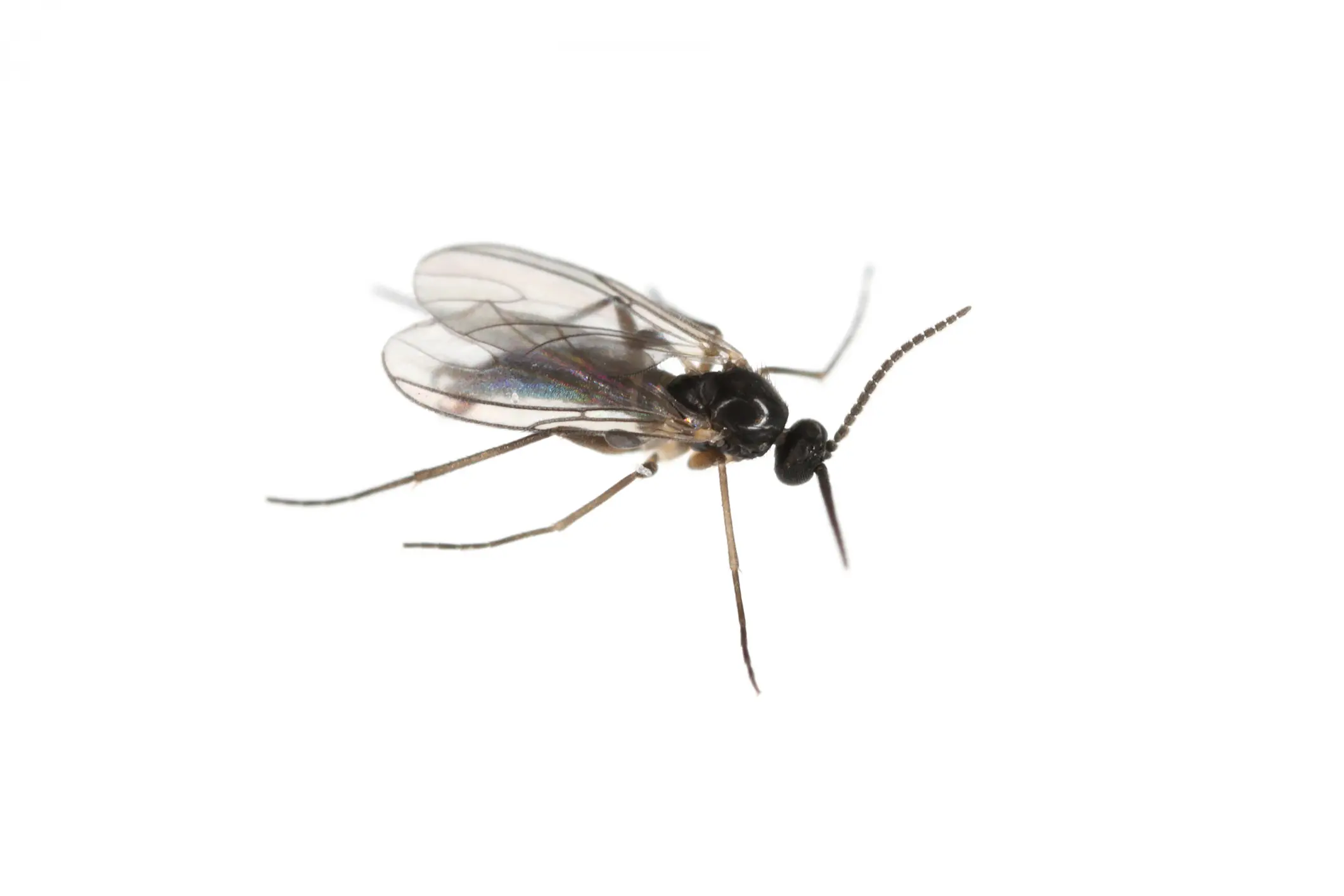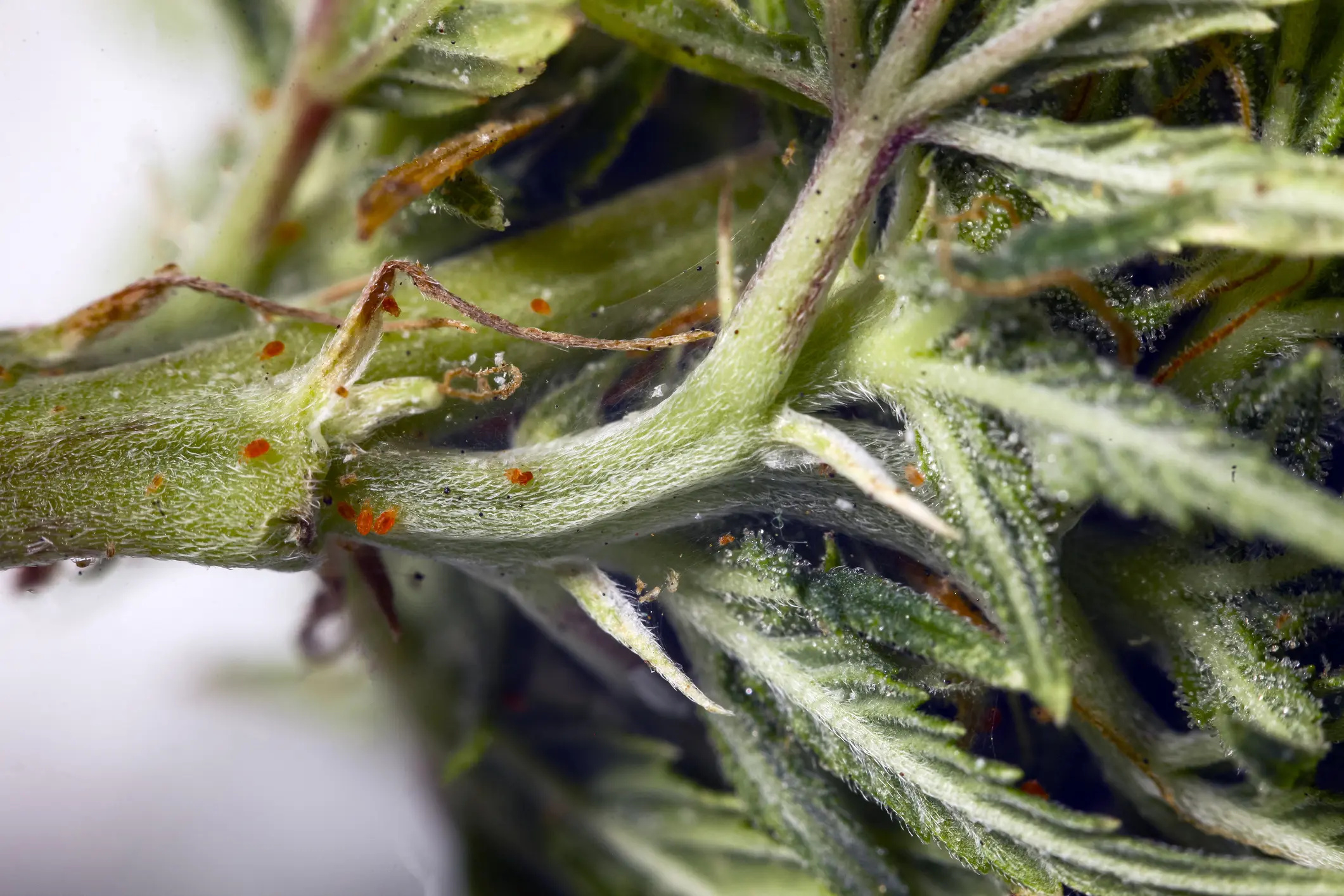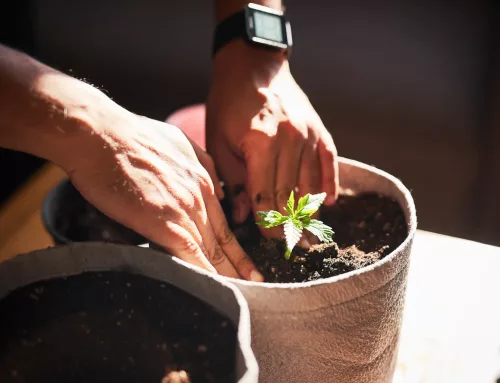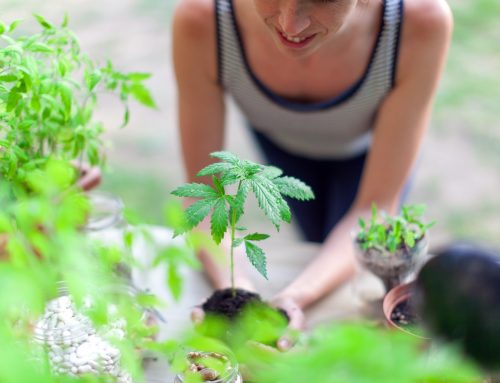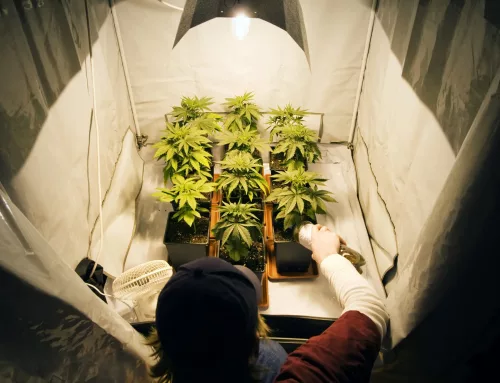Cannabis cultivation, whether conducted indoors or outdoors, faces the constant threat of pests, which can severely impact plant health and yield.
Understanding the most common pests and having effective indoor and outdoor cannabis pest control methods is essential for maintaining a healthy grow.
This quick reference guide dives into the four most common cannabis pests, including signs of a potential problem, preventative measures, and curative solutions to effectively manage these unwelcome visitors.
The 4 Most Common Cannabis Pests
The most common pests that you’ll encounter in cannabis grows are Aphids, Fungus Gnats, Spider Mites, and Hemp Russet Mites.
The severity of an infestation depends on which pest is present, as well as what tactics you’re employing to combat the problem. Untreated infestations can decimate crops and require expensive, scorched-earth style “hard resets” where everything is nuked, culled, and sterilized until all threats are removed.
These are expensive as they cost you your crops, but also because they cost you downtime in your grow that could be used for cultivation, and is instead vacant for treatment.
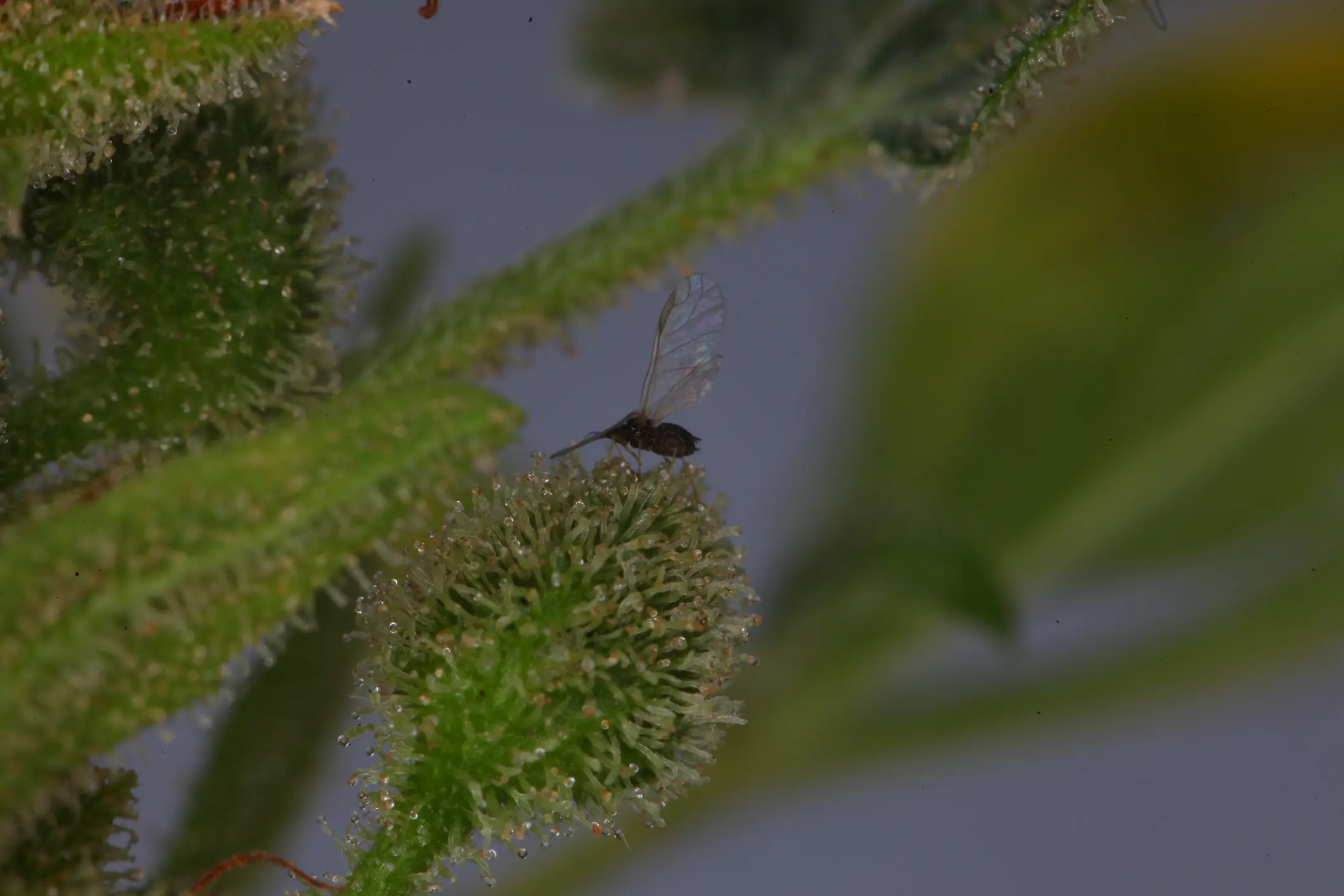
Aphids
Aphids are small, soft-bodied insects that feed on plant sap, causing yellowing and distorted leaves. They will often appear near your root zones first. If you have flyers, those pests have been around for a while.
Signs to Watch For:
- Flying pests near root zone
- Sticky residue on leaves (can appear to be dew-like)
- Clusters of small insects on the underside of leaves
Control Methods:
- Biological Controls: Introduce beneficial insects like ladybugs or lacewings that prey on aphids, effectively serving as an organic cannabis pest control method.
- Remove Food Source: This is done in two ways, first by removing any decaying plant material, and second by treating with sprays and sprenches that discourage feeding on live plant material like leaves and roots.
- Sticky Traps: Passive monitors that can be used to trap pests and keep track of the effectiveness of preventative and curative efforts.
- Slow Reproduction: The use of an ovicide will impede pests’ ability to reproduce dramatically, helping you get a handle on the situation.
- Ideal combo:
Azadirachtin + Rotation of Heavy Hitters (Beauvaria, Pyrethrin, Spinosad*)
*Spinosad is not approved for commercial use in most markets, but can be used by home growers as they would use in their gardens, ensuring to avoid applications to bud sites and/or during flower.
Fungus Gnats
Fungus gnats are tiny flies that thrive in moist soil conditions, with larvae that feed on plant roots.
These can often be mistaken for root aphids. The main difference is that fungus gnats have a wingspan that is in proportion to their body, while aphids’ wingspans will be much longer than their bodies.
Signs to Watch For:
- Slow plant growth, a sign of root damage
- Adult gnats flying around the plant base
- Sudden wilting of the plant
Control Methods:
The good news is that if you have the tools to treat aphids, you likely have the tools to treat fungus gnats on cannabis, as well as many other soft-bodied threats.
- Soil Drying: If you are interested in natural cannabis pest control options, focus on drying out your growing mediums (fungus gnats prefer moist environments). This will make your grow less conducive to gnats. Allowing the top layer of soil to dry out between waterings discourages gnat larvae as a simple yet effective method for organic pest control for cannabis.
- Sticky Traps: As mentioned, these traps are great monitors and work well as a method of passive pest control for cannabis plants. Place yellow sticky traps near the plant base to catch adult gnats and regularly check them to keep track of your progress. If there are too many pests to count, it’s time for new traps.
- Slow Reproduction: The use of an ovicide will impede pests’ ability to reproduce dramatically, helping you get a handle on the situation.
- Diatomaceous Earth: Another passive control measure that creates a barrier on the top of your soil, acting like a barbed wire fence to prevent pests from entering as well as from leaving (especially effective when drenching the soil as pests try to escape).
- Ideal combo:
Azadirachtin + Rotation of Heavy Hitters (Beauvaria, Pyrethrin, Spinosad*)
Spider Mites
The two-spotted spider mite, commonly referred to simply as “spider mite,” is a cannabis plant pest as well as a household and garden staple.
These little mites are not exclusive to your grow, but live around us as an ever-present threat. For this reason, prevention, healthy plants, and maintaining an environment that is not conducive to pests, are the key tactics for beating spider mites on cannabis plants.
Spider Mites in later infestation stages will produce actual webs on plants and cause stippled yellowing on leaves.
Signs to Watch For:
- Stippling: White dots on the tops of your leaves that look like salt grains
- Yellowing: Mites can suck the chlorophyll from leaves, removing the green color
- Webs: In extreme cases, you will see webs on plant branches and under leaves
Control Methods:
- Azadirachtin: This is one of my favorite cannabis pest control products because of its versatility for pest control for cannabis. Azadirachtin application works as an antifeedant, ovicide, and growth inhibitor.
- Mycoinsecticides: Products that contain fungi, such as Beauvaria Bassiana and Paecilomyces, are known for efficacy against mites.
- Oils & Insecticidal Soaps: Oils suffocate mites, and soaps act as desiccants, sucking the moisture out of their bodies. This results in weaker, dehydrated pests that are easier to eradicate.
- Beneficials: Adding beneficial predators such as Phytoseiulus persimilis and californicus are a great option for cannabis pest control during flowering, when you don’t have the option of spraying.
- Environmental Controls: Spider Mites love hot, dry climates. So if you can lower the temperature, you further encourage them to pack their bags. Plus, predators like those above love cooler environments.
Russet Mites
Russet mites are microscopic pests that suck sap from cannabis plants, often undetected until severe damage occurs.
Signs to Watch For:
- Diminished growing
- Lackluster Color, including a matte, dull coloring
- Bronzing or rust-colored leaves
- Curled up or “tacoing” leaves
- Reduced plant vigor
Control Methods:
- Jeweler’s Loupe: You’ll need 20-50x magnification to be able to see these mites (as they’re invisible to the naked eye). Under a scope, russets look like maggots, with four legs and defined abdomen.
- Sulfur: The silver bullet for russets. You can use micronized sulfur and/or sulfur burners in early infestation stages to kill russet mites on cannabis crops. Note: Oil-based products often have a negative reaction when used with sulfur.
- Azadirachtin: As discussed, this tool provides a slew of benefits, including as an antifeedant, ovicide, and growth inhibitor.
- Mycoinsecticides: Products whose primary ingredients are fungus that target pests like russets, including Beauvaria, Paecilomyces, Burkholderia, and Chromobacterium.
- Oils & Insecticidal Soaps: Pests cannot develop resistance to these and they are particularly effective against orthopod species if you are using the right chemistries. Always check the labels to make sure you’ve got the right tool for the job, otherwise, you’re wasting time and money.
- Ideal combo:
Azadirachtin spray on Monday + Sulfur spray on Friday
Importance of Regular Scouting & Plantwork
An ounce of prevention is worth a pound of cure.
The best cannabis pest control is prevention through regular scouting and time spent in the garden among your plants. It’s much easier to prevent a pest problem than it is to fix it once it’s an infestation.
Preventing pest infestations begins with regular monitoring and maintaining a clean grow environment.
Early detection is crucial to managing pest populations effectively.
Implement regular scouting schedules, ensure proper plant spacing for airflow, and use barriers or screens to keep pests out. Being proactive not only saves your cannabis plants but also reduces the need for reactive treatments that can affect plant health and yields.
Be prepared with both preventive strategies and ready-to-deploy solutions to ensure your cannabis cultivation remains healthy and productive.
GROW YOUR OWN
WITH HAPPY VALLEY GENETICS
Explore Feminized Autoflower and Photoperiod Seeds today!

